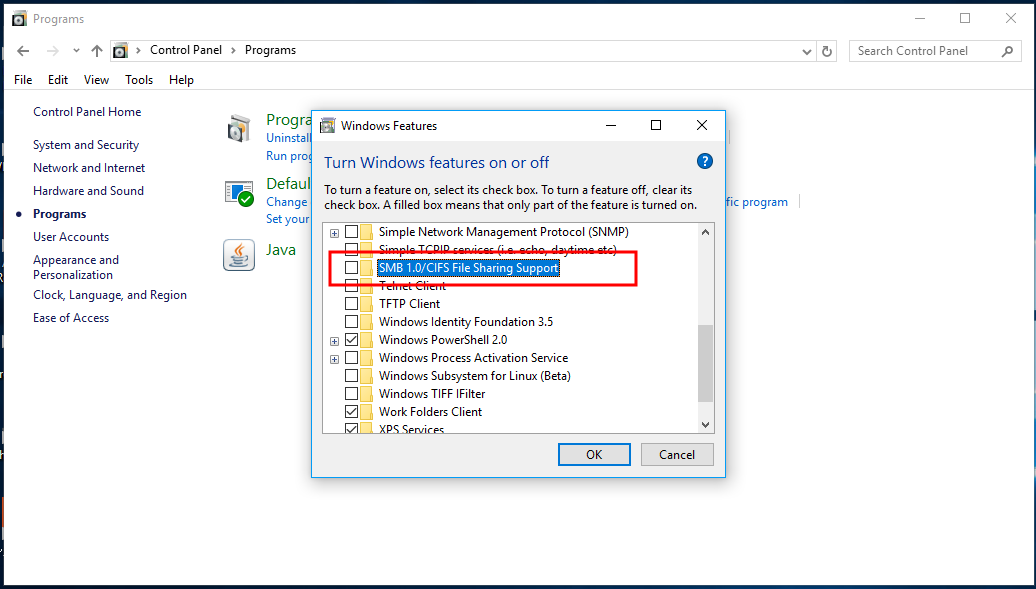

- NEOROUTER SHARED FOLDER DISABLED HOW TO
- NEOROUTER SHARED FOLDER DISABLED FULL
- NEOROUTER SHARED FOLDER DISABLED WINDOWS 10
- NEOROUTER SHARED FOLDER DISABLED PC
Click Create.Ĭonclusion Quota management is a useful feature which allows you to set a storage limit on a shared folder. Step 4: Choose Drive properties from this quota template (recommended): and choose the template from the drop down. Step 3: Click Browse and provide the path of the shared folder. Step 2: Expand File Server Resource Manager -> Quota Management. Step 1: Open server manager dashboard, click Tools -> File Server Resource Manager. Step 10: Check Enable access-based enumeration and click Next. Step 7: Choose the folder created in step 6 and click Select Folder. Step 1: Open server manager dashboard, click File and Storage Services. Sharing a Folder using File and Storage Services Step 5: Expand File and Storage Services -> File and iSCSI Services -> File Server Resource Manager. Step 3: Choose Role-based or feature-based installation and click Next. Step 1: Open server manager dashboard, click Manage -> Add Role and Features.
NEOROUTER SHARED FOLDER DISABLED HOW TO
This article will explain how to share a folder and enable quota using the File Server Resource Manager.
NEOROUTER SHARED FOLDER DISABLED WINDOWS 10
I’m absolutely stumped! Help!!!Do you think Windows 10 is somehow involved? I had a quick look in their Security, but it appeared to be disabled (couldn’t click on anything to do with the Firewall).The File Server Resource Manager is a role in Windows Server 2012 R2 which is used to enable quotas on shared folders. This is what the entries looked like, except all the Source IP addresses were different, although because I couldn’t actually use Chrome, I hadn’t opened any webpages at all:
NEOROUTER SHARED FOLDER DISABLED FULL
The only entries under ‘Last 24 Hours’ were my attempts to use Chrome on the previous night (dated 30/04/20), the full scan I did and my last attempt to open Chrome on 1st May. I immediately went into McAfee to see if I could find an issue there.

‘Settings’ Graphic (top right corner), scroll down to ‘My Info’, Security history Ĭhoose: ‘Everything’ or ‘Incoming Connections Blocked’ and ‘Last 24 Hours’.īy doing this, I found McAfee had blocked my only attempt to open Chrome today (a single entry for 1st May, 2020), as when I powered up the laptop, the first thing I did was to check to see if Chrome was somehow fixed.
NEOROUTER SHARED FOLDER DISABLED PC
PC Security: “We protected you from over 24 thousand risky connections so far” I restarted Windows 10 each time.īelow is what happened step by step when I opened McAfee to see if I could find the problem. I also tried turning off the Firewall completely. I tried everything you’ve said to try, including turning off ‘Net Check’. When I click on my Chrome app, it opens, but 2 – 3 seconds later it self-closes without anything else happening. It has been known to cause problems with some applications. It’s a layer of protection that McAfee provides where it monitors the connection and validates it against trusted IP address info. You’re set! The application should now be allowed to access the network through the firewall. If you have problems with the application after setting all the items above, you may want to set “ Net Guard” to “ Off“. This setting can block some traffic on certain apps. Otherwise, you can select “ Open ports to Home and Work networks“, or “ Open to all devices“. For the drop-down menu “ Use designated ports” should be sufficient to work with most apps.To prevent sharing the files inside, you have to change this setting for the files inside. Important: If you prevent sharing of a folder, it only applies to the folder. In the end I created small KVM machine that runs a minimal linux and acts as a gateway router + nginx proxy for virtual domains so that on the proxmox host I use no scripts/rules at all. lately I use CSF firewall so I can block failed login attempts etc. Uncheck Editors can change permissions and share. put all the IP Tables rules in /etc/rc.local and every time reload the rc.local file. Otherwise select “ Outgoing Only” to allow only outbound traffic. Open the file in Google Drive, Google Docs, Google Sheets, or Google Slides. In the “ Access” section, select “ Incoming and outgoing” to allow both incoming and outgoing traffic to the applications.If the program is not listed, select the “ Add” button, then select “ Browse” to choose the application. Choose the program you wish to allow access, then select “ Edit“.Select the “ Internet Connections for Programs” option.Right-click the McAfee logo in the Windows Taskbar down the the time, then select “ Change Settings” > “ Firewall“.The tutorial is based on version 13.6 of McAfee Internet Security.


 0 kommentar(er)
0 kommentar(er)
